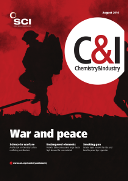A new air quality forecasting service has been given the go-ahead by the EU. The launch of the service is linked to the release of five satellites, known as Sentinels, in 2014-2020, which will make more and better observations of air, land and sea, and will mark the beginning of continuous air quality forecasts across Europe, following a five-year pilot.
The new service, run by Reading-based MACC (Monitoring Air Composition and Climate), promises to make big improvements to air quality and pollution forecasts by supplying finer local detail. ‘We’re now forecasting four days ahead with the same quality as we were forecasting three days ahead 10 years ago,’ says Vincent-Henri Peuch, head of the atmospheric composition division at MACC. ‘By 2020, we’ll be forecasting at this quality five days ahead.’
The MACC global model is an aggregation of seven different EU models and monitors a range of different chemicals and greenhouse gases, such as ozone and nitrous oxide. It simulates how pollutants are transported and how chemical reactions take place, kick-started by new observations every time it is run from satellites as well as in situ or terrestrial equipment such as sensors.
Improvements in satellite and in situ data, as well as in physics expertise and computer science, mean air quality forecasting is already considerably better than a decade ago. Forecasts of Saharan dust contributing to London weather conditions in April 2014, for example, would not have been possible in the 1990s. ‘In the past, it would not have been possible to assess and disentangle the contribution of both local and transported pollution,’ says Peuch.
Further progress is predicted by 2020, because the new satellites, two of which are to be devoted to air quality observations, will provide even finer data with better spatial resolutions and more frequent observations (hourly, compared with around twice a day previously).
‘One of MACC’s big contributions to air quality forecasting is in providing information about pollution transported over large areas. That’s very useful for people focusing on local air quality pollution,’ says Peuch. Large wildfires in Russia in 2012, for example, had an effect on air conditions over the UK. ‘For the first time, we could forecast how the plumes would be transported,’ he adds.
Air Text is to become one of MACC’s first users. Launched in 2007, the free service is run by Cambridge Environmental Research Consultants (CERC) and supplies UV, air pollution, pollen and temperature forecasts for Greater London. ‘Chemical transport models depend on weather forecasts but not the other way round. Chemicals are influenced by wind and temperature, and chemical reactions are affected by sunlight,’ explains Amy Stidworthy, senior consultant, distinguishing between weather and air quality forecasting.
Predictions were previously constrained by a relative lack of international data, and because observations were more local. ‘You’d be hard pushed to produce a robust forecast of air quality of sufficient accuracy without knowing what is happening to pollution coming into the local area from the outside – transboundary pollution. You can come up with statistics produced by technical experts to estimate it – but it’s not as good,’ Stidworthy points out. MACC data fill in those gaps.
Air quality forecasting is a relatively new science partly because local air quality models had no access to regional forecasts. The use of satellite data improved existing knowledge. Forecasts also used to take too long to calculate. ‘Major improvements in computer power mean forecasts can now be produced in a timely manner,’ says Stidworthy. Meanwhile, continuously improving in situ measurements also play a major role in supplying finer data.
‘The pollutants of most harm are those you cannot actually see – the smallest particles. We can observe particles of less than 2.5 microns, which is a relatively recent development,’ explains Stidworthy. Better data means Air Text plans to forecast new substances in future, such as ultra-fine particulates and carbon black.
The MACC service, which is part of the wider EU Copernicus programme, goes live in 2015. It will be run from the European Centre for Medium-Range Weather Forecasts, based in Reading, UK.





